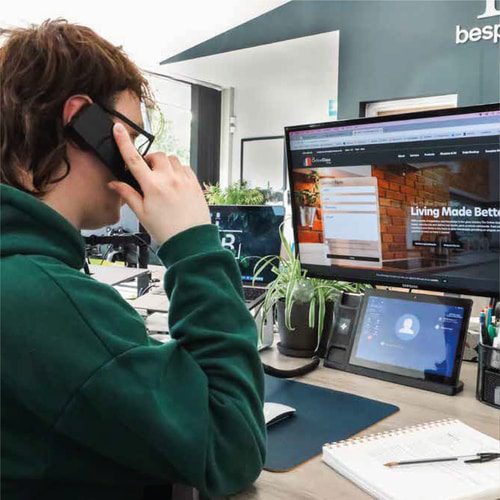
Reimagined Headers in Web Design
A website header is one of the most important parts of designing a website. They play a crucial role in grabbing visitors’ attention and establishing a connection with them. When you’re designing a website header, the header should inform the visitor that they have come to the right place and simultaneously guide the visitor to explore further.
Our web designers from Wigan know that the header plays a crucial role in establishing connections between your brand and your guidance. Here’s why it’s essential to use redesigned headers.
What does a website header include?
A header gives users answers to the basic questions: who is the brand, what goods and services are offered, how to get in touch with the company, and so on. It also represents the quality and even identity of a website.
The main elements of a website header usually are:
- logo or brand identifier
- call to action
- navigational elements
Header size
There is no definite answer to the question of what size a website header image should be. One of the most difficult aspects of website building is ensuring the effectiveness of every screen size and the different resolution of screens. The header should be of a height that does not interfere with the other elements of the website or the content.
Fixed (sticky) header
“Sticky headers” are headers where the navigation follows you around the page while you scroll, which is standard in website design.
Using a fixed header shouldn’t violate your overall design concept. It’s a good idea for both desktop and mobile designs:
- E-commerce websites — the cart is always in front of the user.
- Service websites — the phone number or a CTA are always on display.
Fixed headers can improve the customer experience that keeps users oriented and gives them more control. A fixed header provided users with a navigation area and can be helpful on content-heavy pages with long scrolling.
Hamburger menu
Another popular design header is hiding basic links of data categories behind the hamburger button. It is called a hamburger is a form consisting of horizontal lines that look like a typical bread-meat-bread hamburger.
This button is placed in the header and nowadays, it is a typical element of interaction. Hamburger menus free up space on the website and are more minimalistic, saving the place for other essential layout elements. This design technique also provides additional benefits for responsive and adaptive website design.
Mobile header design
A header should be correctly displayed not only on the desktop version of the website but also on the mobile one. The daily use of mobile devices led to website designs that look like mobile-oriented even in their desktop incarnations. More than half of web traffic today comes from mobile, it’s time to increase conversions on your mobile sites with extensive new mobile headers and expandable menus.
Headers greatly contribute to a website’s success or failure. It’s important to remember your website’s purpose and type before choosing a header design because it could affect your visitor conversions.




